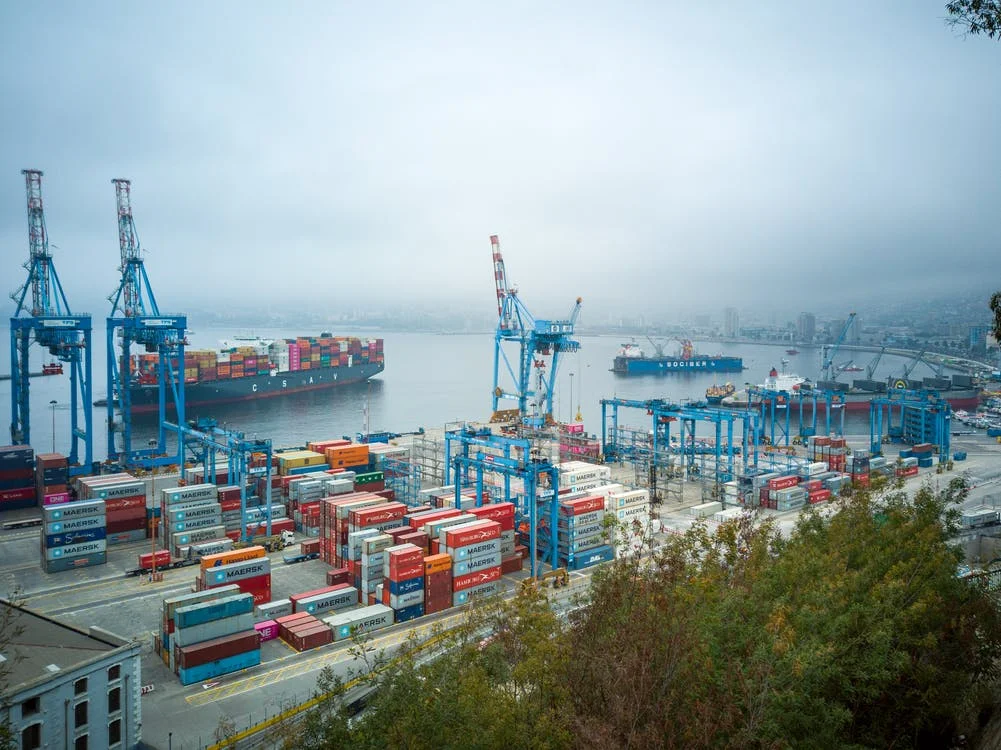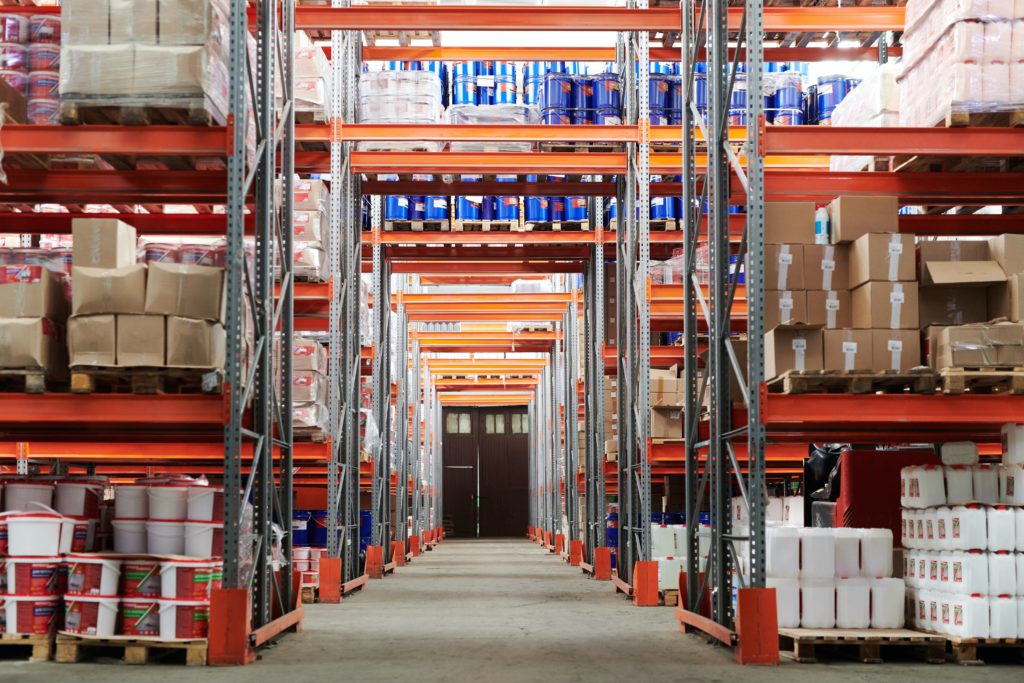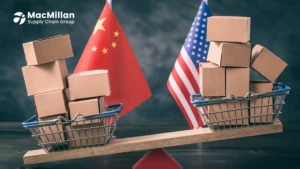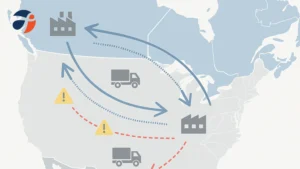With the effects of the pandemic still lingering and rising prices impacting the global economy, it can be challenging to improve your businesses’ bottom line and gain a competitive edge in the market.
Business owners dealing with the storage and distribution of inventory often look in the wrong places to save costs. If you’re working with a supply chain company or you’re dealing with a supply chain yourself, the best way to boost your profit margins is to reduce how much you spend on your current solution.
With that in mind, here are 9 ways to cut your supply chain costs.
Table of Contents
- Look for Inefficiencies in the Supply Chain
- Track Customer Demand
- Create a Supply Chain Strategy
- Know If Your Supply Chain Has a Good Overview
- Outsource a Supply Chain and Logistics Service
- Review Existing Warehouse Processes
- Reduce Transportation Charges
- Embrace Automation
- Minimize Waste
- Want to Cut Your Supply Chain Costs?
1. Look for Inefficiencies in the Supply Chain

If you’re a business owner with no formal background in supply chains, chances are that you’re not aware of all the processes that happen behind the scenes.
Identifying any inefficiencies in this overall system can lead to cost savings. There are some things you can do right now to get started:
1.1 Understand Fees Behind Payment Processing Platforms
What payment processing platform is being used at each step of the way? What are the transaction fees when product is distributed to retailers? If you work with a supply chain firm, what are all the fees that go into paying them?
Take a close look at transaction costs and ask for written documents that detail the fees. It’s possible that there are hidden costs in fine print that you’re not aware of.
1.2 Check if the Latest Technology is Being Used
Supply chain technology must be up to date. If you or your supply chain provider are using outdated technology, and your product is not moving down the supply chain as efficiently as it could, you’re losing out on much revenue.
1.3 Engage an Outside Consultant
When products are not being manufactured fast enough, it’s moving slowly, or you run out of stock, customer satisfaction typically decreases. If one or more of these issues have happened to you repeatedly, you want to consider engaging an outside consultant who specializes in supply chain systems. They’re able to use their expertise to identify any inefficiencies in the existing system.
1.4 Communicate Your Expectations
If you work with a supply chain logistics service and you don’t communicate your expectations clearly, then they might assume that reducing costs isn’t your priority. It’s recommended that you always inform your provider about your needs.
For example, you might let them know that you prefer having good visibility of the overall supply chain processes. Perhaps you want a bi-weekly or monthly report of inventory volume and distribution. Or maybe you want a better breakdown of the costs to get a sense of your total operational costs. Whatever it is, be sure to communicate it.
2. Track Customer Demand
Tracking customer demand is a great way to reduce your total costs.
If you want to improve supply chain efficiency, you should monitor purchasing patterns on a regular basis. There’s much power in being able to predict changing trends and seasonal demands; Knowing how to order the right amount of product allows you to ship items to the right place at the right time, resulting in lower inventory cost, better efficiency, and a reduced risk of over-stocking or under-stocking.
3. Create a Supply Chain Strategy
By having a strategy in place, you set expectations for yourself and the supply chain provider you’re working with. A good strategy helps lower costs and set expectations for the performance of the supply chain operations and shipping logistics.
A supply chain strategy is especially useful if you feel like your current service is keeping you from achieving your revenue goals. Your supply chain strategy and business plans should connect, meaning that your metrics must be aligned with your financial targets.
An effective supply chain management strategy also involves using management systems to help you overcome strategic challenges, economic pressures, government regulations and operational obstacles. It includes a comprehensive plan for facing anything that might hinder your chance of efficiently moving products.
4. Know If Your Supply Chain Has a Good Overview
If you outsource your supply chain tasks, you must be aware that reliable and trusted supply chain service should know where your product is located at all times. This applies to every part of supply chain, including warehousing and distribution.
If they have a poor inventory management, they might misplace products, have incorrect inventory levels, and record wrong measurements (dimensions, weight, etc.). Once a mistake has been made in the warehouse, it can be challenging to pinpoint the cause and find out where things went wrong.
5. Outsource a Supply Chain and Logistics Service
Many businesses avoid handling supply chain and logistics processes themselves because they don’t want to incur extra costs on their end. This includes …
- Taking on labour
- Purchasing and maintaining a vehicle for transporting products
- Renting or purchasing a warehouse
- Hiring drivers
- Coordinating travel routes and schedules
- Paying taxes and fees
Although it’s possible to manage these processes yourself, it’s better to outsource them if you’re looking to save costs and time. That way you can focus on growing your business and …
- Improve customer service
- Scale your business
- Have better security
- Improves product quality
- Reduce shipping costs
- Deal with tricky laws and regulations
- Have access better technology
6. Review Existing Warehouse Processes
Warehouse storage can result in unnecessary costs when it isn’t being managed in an effective way. If you or your supply chain manager are dealing with inventory, you might want to consider these steps to cut costs:
6.1 Reduce Movement
Is your product moving from A to B in the most efficient way? Costs increase every time your product moves from one location to another.
6.2 Try Cross-Docking
Cross-docking is the process of unloading goods from inbound delivery vehicles directly onto outbound vehicles. This removes the need for warehouse storage.
6.3 Real-Time Supply Chain Tracking
Without a proper management system, it’s possible to lose track of inventory. A real-time supply chain tracking system ensures that you always have access to the whereabout information of your goods.
6.4 Keep Your Warehouse Organized
Storing outdated items at a warehouse and distribution center can take up valuable space that could otherwise be used for products that haven’t expired yet.
6.5 Use the Right Size for Your Storage
If you don’t have enough space to accommodate your products, you may need to invest into additional storage. The more product you’re able to storage, the more you’ll sell.
7. Reduce Transportation Charges
Transportation charges can be a big part of your overall spending. Consider these strategies to reduce costs:
7.1 Reduce the Number of Carriers
The first step to reducing transportation costs is to limit the number of carriers you use. If you provide a single carrier with more volume, they will typically reward you with lower rates.
7.2 Consolidate Shipments
Consolidating shipments will result in fewer trips and reduced costs. When you shift from less-than-truck-load shipments to truck-load shipments, you’ll be offered discounts for larger shipments.
8. Embrace Automation
Having an automated warehouse storage system can lower your spending. Tedious tasks such as order processing, product relocation and distribution can take up much of your valuable time.
You will also have better supply chain visibility, allowing you to spot issues immediately. Embracing automation will allow you to save money in the long run.
9. Minimize Waste
Waste reduction is an important part of the overall supply chain, that if well-managed, can reduce costs. With that in mind, here are some ways to minimize waste:
9.1 Select Packaging Materials Carefully
If you use too much product for your packaging, you may spend more money than required. It’s therefore important you only use as much product as needed. The product should be measured so that the right packaging materials and dimensions can be selected.
9.2 Manage Reverse Logistics
The process of moving goods from the customers back to the sellers is called reverse logistics. An efficient supply chain company will make good use of the returned products by turning potential waste into additional sales. If done well, this will also minimize the social, economic, and environmental impact of your operations.
9.3 Turn to Automated Packaging Solutions
Automated packaging solutions can save labour costs and reduce waste. For example, box sizing machines are great for warehouse dispatch fulfillment as they automatically size multiple footprint boxes in any sequence.
Want to Cut Your Supply Chain Costs?
If you need help in reducing your overall costs, we’d love to hear from you. The MacMillan Supply Chain Group has trained staff experienced in cost reduction techniques. If you’d like to gain a competitive edge and improve your bottom line, you can call us at 416-941-2759 or email us here.




